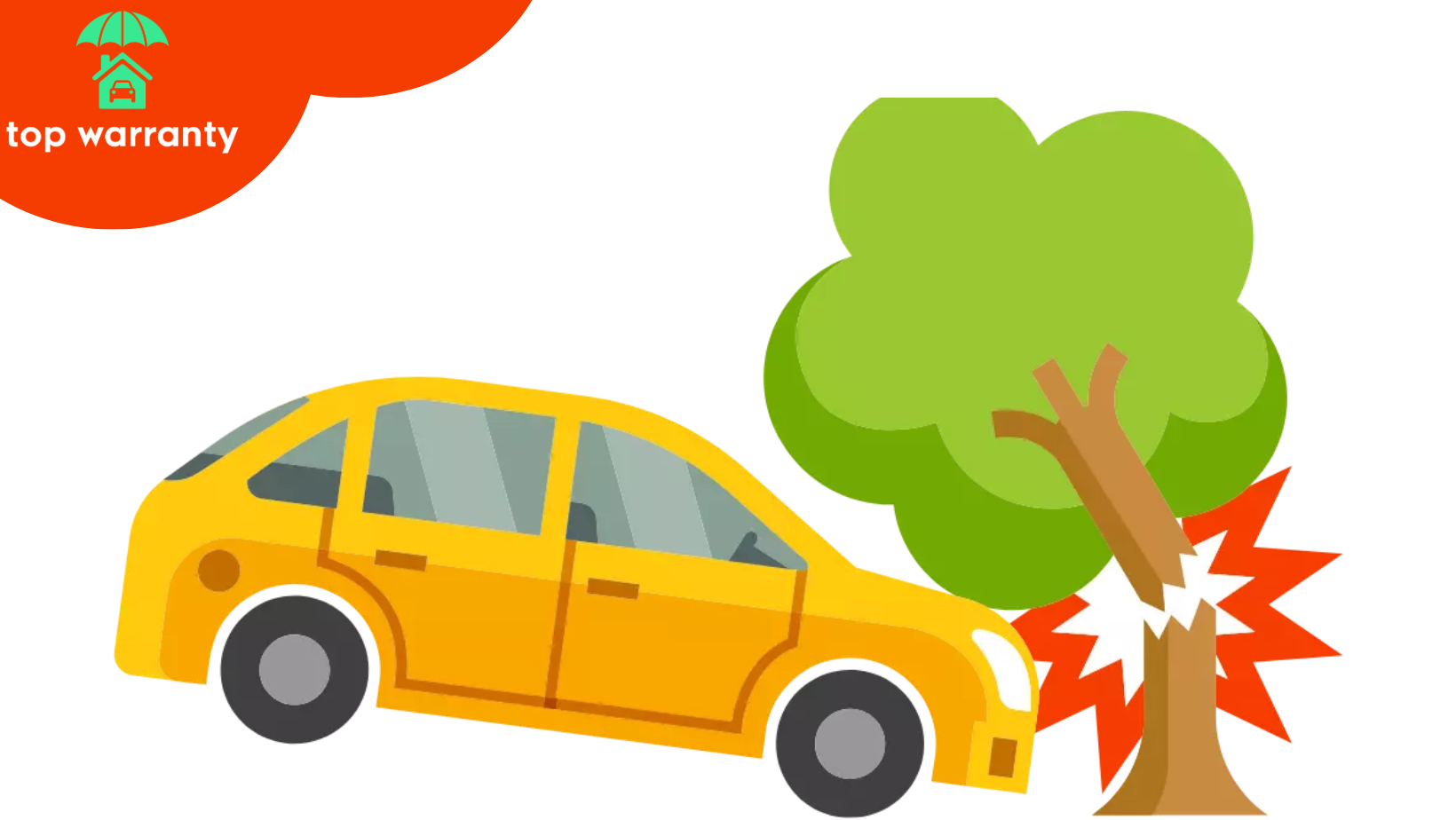
Comprehensive and collision coverage are two important types of car insurance that protect your vehicle from damage and losses. Both provide valuable protection, but they cover different things.
Comprehensive coverage helps pay for damage from non-collision events like theft, vandalism, fire, hail, flood, and damage from animals. Collision coverage pays for repairs when your vehicle is damaged in an accident with another car or object.
Understanding the key differences between comprehensive and collision coverage can help you decide which coverage to get for your specific needs and budget. While the two policies overlap in some ways, they are designed to handle different types of auto damage scenarios.
In this guide, we’ll explore comprehensive and collision in depth. We’ll look at what each covers, when they are most useful, how much they cost, and how to make decisions between the two.
What is Comprehensive Coverage?
Comprehensive coverage is an optional add-on car insurance policy that provides protection beyond collision and liability. It covers damage to your vehicle from non-collision events like theft, vandalism, fire, flood, hail, earthquakes, falling objects, riots, explosions, and collisions with animals.
Definition of comprehensive
Comprehensive coverage gets its name because it comprehensively covers a wide range of incidents that standard car insurance policies don’t include. It protects against damage to your car that doesn’t involve a collision with another car or object.
What it covers
Some examples of what comprehensive coverage protects against:
– Theft or vandalism
– Damage from natural disasters like hail, floods or earthquakes
– Fire damage
– Falling or flying objects hitting the car
– Explosions
– Collision with an animal on the road
Pros
– Protects your vehicle investment against a wide range of damage
– Generally inexpensive to add to an existing policy
– May be required if you have an auto loan/lease on the car
Cons
– Doesn’t cover mechanical failures or maintenance
– Higher deductible than collision coverage
– May not be worth it on older, low-value vehicles
So in summary, comprehensive coverage fills in the gaps left by collision and liability coverage to fully protect your vehicle from damage. It’s an affordable way to guard against unforeseen events.
What is Collision Coverage?
Collision coverage is an optional add-on for car insurance policies that covers damage to your vehicle from a collision with another car or object, like a tree or guardrail. Here’s a quick overview of how collision coverage works:
Definition of Collision Coverage
Collision coverage pays to repair or replace your vehicle if it’s damaged in an accident with another car or object. This covers the direct costs to fix your car after the crash.
What Collision Coverage Includes
– Damage from colliding with another car, object, or animal
– Damage from flipping over or crashing into something
– Accidents that are your fault or another driver’s fault
– Hit-and-run accidents with uninsured drivers
Pros of Collision Coverage
– Protects your vehicle investment in case of an at-fault accident
– Can prevent you from paying thousands out-of-pocket for repairs
– May be required by your auto loan or lease agreement
Cons of Collision Coverage
– Comes with a deductible, usually $500 to $1,000
– Increases your insurance premiums
– Doesn’t cover damage from vandalism or natural disasters
So in summary, collision coverage helps pay for car repairs or replacement if you damage your vehicle in a crash, protecting you from large out-of-pocket costs. The trade-off is higher insurance rates and a deductible.
Key Differences
Comprehensive and collision coverage have some notable differences when it comes to deductibles, cost, and repairs covered that drivers should understand:
Deductibles – Comprehensive coverage deductibles are usually lower than collision deductibles. Comprehensive may have a deductible around $100-500, while collision is often $500-$1000 or more. So you’d pay less out of pocket for a comprehensive claim.
Cost – Comprehensive is generally less expensive than collision since it covers less risky situations. Expect to pay $100-$300 annually for comprehensive, compared to $200-$600+ for collision depending on your car’s value and other factors.
Repairs Covered – Comprehensive covers damage from non-collision incidents like theft, vandalism, weather, fire, or animals. Collision covers your repairs when you hit an object or flip/roll your vehicle. Comprehensive repairs are often less costly.
So in summary, comprehensive tends to have lower deductibles, lower premiums, and less expensive claims. But collision covers damage from accidents, which are more likely for many drivers. Understanding these key differences helps determine which coverage you need.
When to Get Comprehensive
Comprehensive coverage is recommended for older and/or higher value vehicles. Since comprehensive covers damage from non-collision incidents like weather, fire, theft, and vandalism, it makes sense to have this protection for cars you want to preserve and protect.
Here are some situations when comprehensive coverage is advisable:
You have an older collectible or classic car. Since these vehicles have higher value but are more susceptible to non-collision damage, comprehensive helps safeguard your investment.
You own an expensive luxury vehicle. Comprehensive protects against theft and damage that could be very costly to repair or replace on high-end cars.
You live in an area prone to extreme weather like hail, flooding or hurricanes. Comprehensive protects against storm-related damage not covered by collision.
You street park in a city or area with high rates of vandalism and theft. Comprehensive covers damage from vandalism, riots, and theft even if the car is not driven.
You have financed or leased your vehicle. Most lenders and leasing companies require comprehensive coverage to protect their investment in your car.
You have a car with custom equipment and modifications. Aftermarket parts and customizations can significantly increase your car’s value so comprehensive helps safeguard these investments.
You use your vehicle for business purposes. Comprehensive protects your business investment and income source from non-collision damage.
The bottom line is that comprehensive coverage provides protection for your vehicle investment against a wide range of damage risks beyond collision. It is most beneficial and recommended for high value new and used vehicles you want to protect.
When to Get Collision
Collision coverage is recommended for newer vehicles that you still owe money on through an auto loan or lease. Since collision covers damage from an accident no matter who is at fault, it protects your asset if you get into a crash. This ensures you won’t be stuck with expensive repairs or replacement costs on a vehicle you don’t fully own yet.
Collision is also a smart choice if you drive an expensive luxury or sports car. Repairing dents, scratches and other damage on high-end vehicles tends to be very costly. Collision coverage will save you money overall if your car is totaled or needs major body work after an accident.
Drivers who commute long distances on a regular basis should also consider collisions. The more miles you put on your car, the more likely you’ll eventually have an accident or encounter an animal, debris or other road hazards. Collision protects against these common mishaps that tend to occur more frequently with high mileage drivers.
Adding collision is wise if you have a leased vehicle that requires you to have it. Read your lease agreement to see if collision is mandatory. Dropping it could put you in violation of the lease.
Finally, if you can’t afford to pay for repairs or replace your vehicle out-of-pocket after a crash, collision is a smart buy. It provides essential financial protection to avoid the burden of high repair bills. The peace of mind of having collision is worth the extra cost for many drivers.
Comprehensive vs Collision Cost
When it comes to the cost of comprehensive and collision coverage, there are some key differences to consider.
Comprehensive coverage is generally less expensive than collision. On average, comprehensive costs between $125-$300 per year. However, the cost can vary widely depending on your car’s make, model, age and value. Older, less valuable vehicles will have a lower comprehensive premium.
Collision coverage tends to cost more, with an average annual premium of $300-$600. For newer cars or luxury vehicles, collision can cost $1,000 or more per year. That’s because collision claims are more frequent than comprehensive claims, and repairs tend to be more costly for newer vehicles with more expensive parts.
In general, expect to pay more for collision than comprehensive. But many factors impact your exact premiums for each, including your deductible, driving record, location and more. Bundling your car insurance policies can also help you save.
When deciding between collision vs. comprehensive, weigh the costs against your risk tolerance. Lower value cars may only need cheaper comprehensive coverage, while collision is essential for newer cars you still owe money on. Check with your insurer for quotes tailored to your specific vehicle.
Bundling Policies
Many consumers can lower their car insurance premiums if they bundle their auto insurance with other policies from the same provider. Home insurance is the most common policy to bundle with auto insurance, but others include:
– Renters insurance
– Life insurance
– Umbrella insurance
– Motorcycle insurance
Bundling works to lower rates because insurers want to retain multi-policy customers. It costs less to retain existing customers than attract new ones. Plus, bundling allows insurers to spread risk across multiple policies.
Customers who bundle can save 10-15% or more on their total premiums. Actual savings depend on the insurer, number of policies, and coverage limits. Those who insure multiple vehicles and properties tend to maximize savings.
Most insurers require the policyholder’s name to match on bundled policies. Spouses can bundle their auto and home insurance too. Some insurers allow bundling auto with renters or life insurance policies as well.
To get a bundled rate, contact your current provider about adding policies. You can also shop bundled rates from other insurers. Comparing rates ensures you get the best price for your situation.
The Bottom Line
Determining whether to get comprehensive or collision coverage requires understanding what each covers, comparing costs, and evaluating your specific situation and needs. Here’s a quick summary:
Comprehensive covers damage from non-collision incidents like weather, vandalism, theft, fire, or animal collisions. Collision covers crash-related damage from colliding with an object.
Comprehensive is usually cheaper than collision. Comprehensive rates are also not affected by accidents or tickets like collision.
It’s recommended to get both if you have an auto loan/lease or want maximum coverage. Comprehensive alone may suffice for older cars. Collision alone is also an option if you want to cover accident-related damage only.
Consider dropping collision and keeping comprehensive on older cars worth less than 10 times the collision premium.
Bundle comprehensive and collision with other policies like homeowners or renters insurance for multi-policy discounts.
Compare quotes from different insurers. Premiums can vary widely for the same coverage.
The best approach is to evaluate your specific situation – the value of your car, your budget, risk factors in your area, and the potential repair/replacement costs you’d face. This will help determine the right level of protection to properly insure your vehicle.
